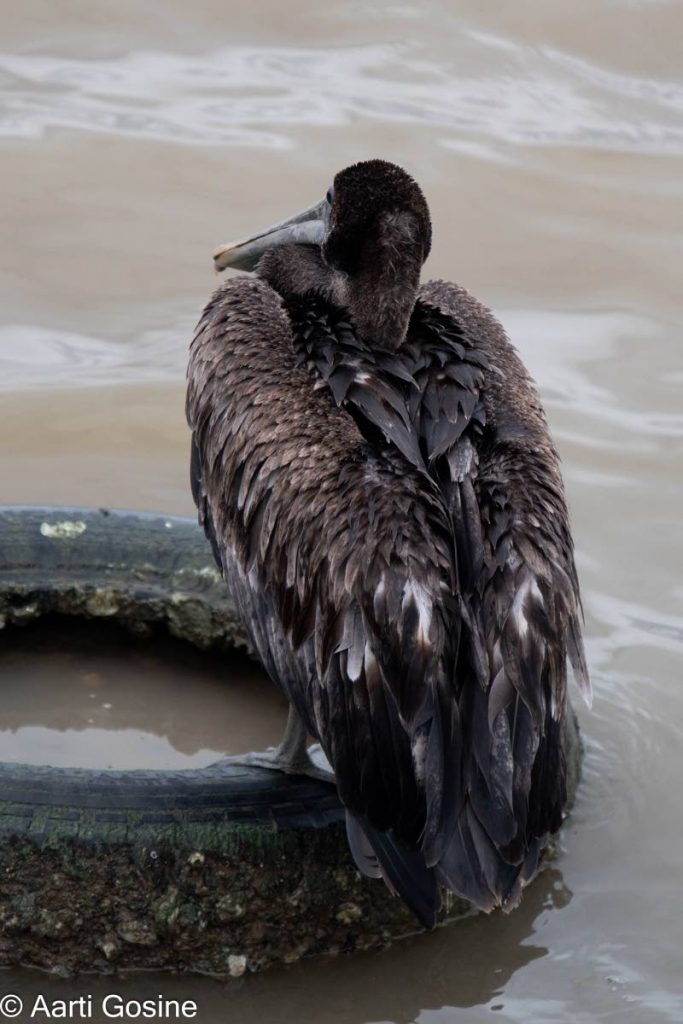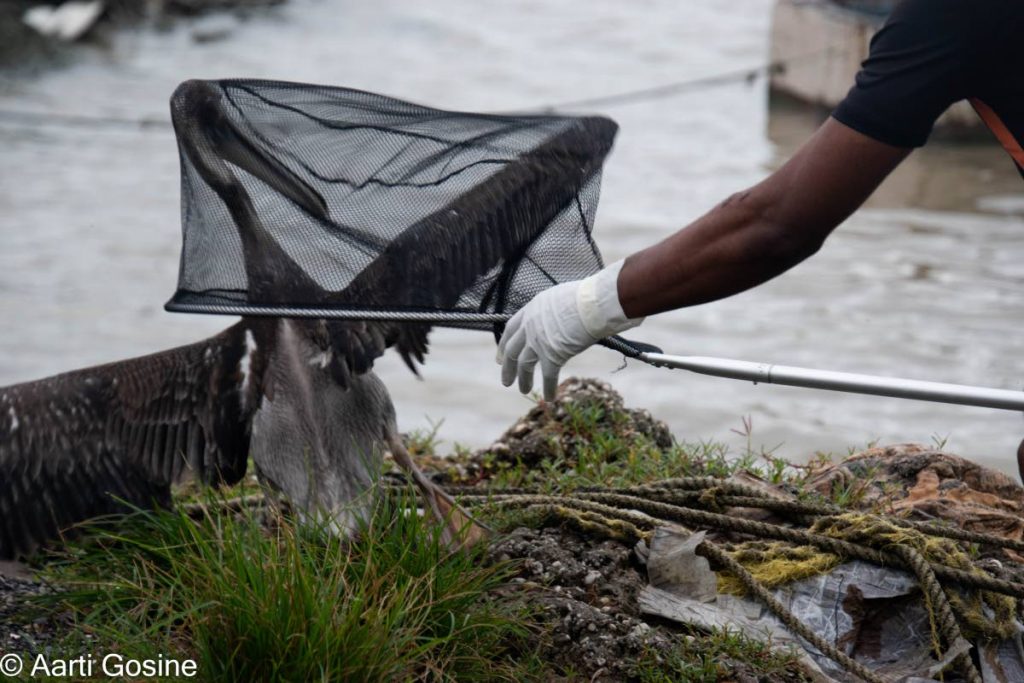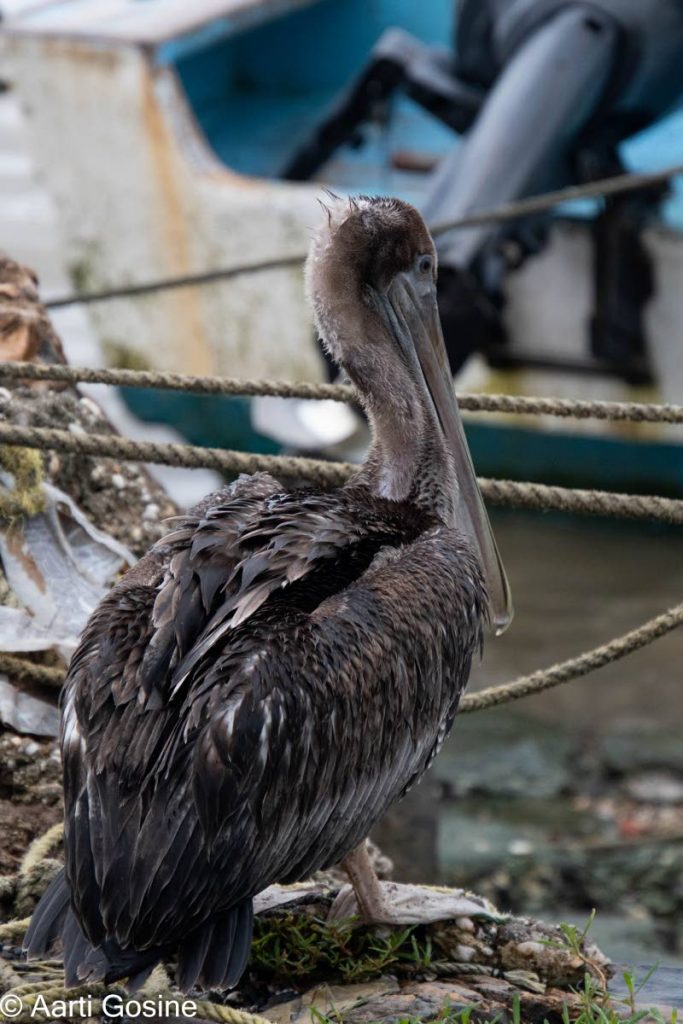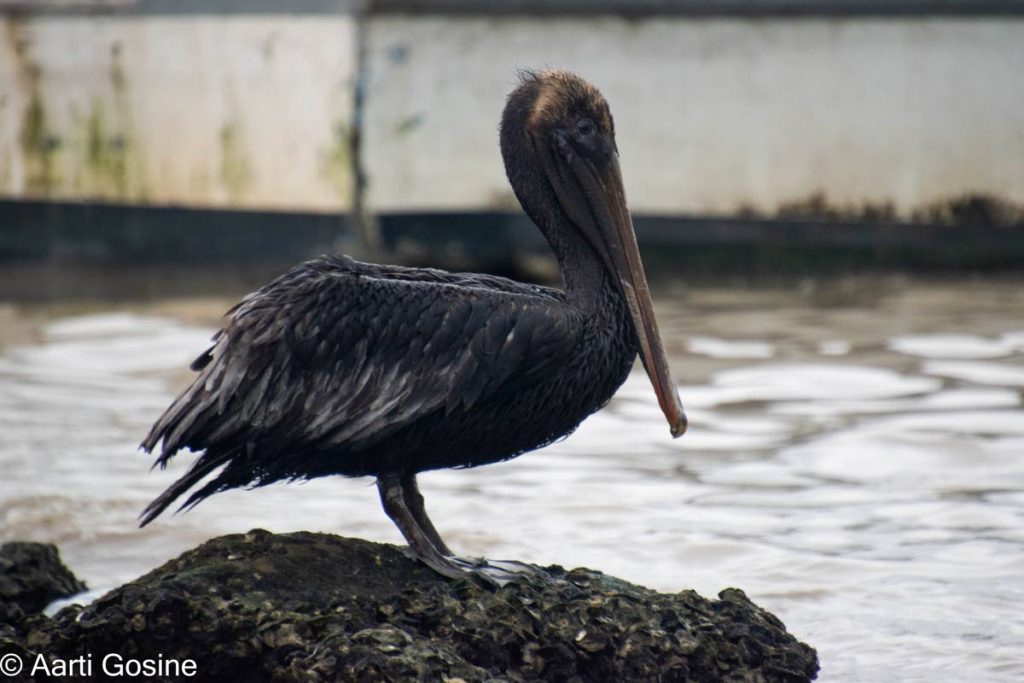Pelican rescue: How oil spills affect seabirds in Trinidad

After a recent oil spill near the Point-a-Pierre harbour, the El Socorro Centre for Wildlife Conservation helped rescue over ten oil-covered pelicans.
The centre’s founder, Ricardo Meade, said it’s sad to see the population of these majestic seabirds face yet another threat.
Of the many different species of pelicans found around the world, the brown pelican (Pelecanus occidentalis) is the only native species found in Trinidad and Tobago.
Meade told Newsday Kids, “Pelicans spend a lot of time sitting on the water or plunging into the water to feed. This brings them into direct contact with surface oil spills.”

Meade said in the past the local pelican population had been declining owing to overhunting and the effect of chemical pollutants from industrial activities near the Gulf of Paria.
The birds are now protected by law under the Conservation of Wildlife Act. And one of the chemicals that used to run off into the Gulf – an insecticide know as DDT – is now banned worldwide. (In case you're wondering, DDT stands for dichlorodiphenyltrichloroethane – phew! that's a long word!)
These two factors have meant that the birds were under less threat, but now that their population numbers have recovered, Meade fears oil spills will reverse the progress they have made.
So how does an oil spill affect pelicans?

Meade explained, “The black oil coating can increase their body temperature significantly and, because the coating is sometimes so heavy, it can lead to them drowning in the water."
He also said that the oil is considered a toxin, and if the birds swallow it, the oil can destroy their gastrointestinal system.
But Meade added that pelicans can also die from starvation because they cannot fly or hunt properly when they are covered in oil.
Oil spills can also affect the animals the pelicans feed on, in both the short term and longer.
“It’s a seabird and its diet consists of mainly fish. I say mainly fish because they have been known to consume other things, out of curiosity or desperation," Meade explained. “For example, they would eat octopus, squid, lobster or even shrimps.”
When fishing, pelicans glide up to 40 feet above the water and dive to catch fish.

“When they dive, their throat pouch expands to hold up to one and a half gallons of water. They would then expel the water, keeping their catch in the pouch.
“They then align their catch in their mouth so that they can swallow them head first. If their catch is sideways, it can get stuck in their throat.”
The pelican’s throat pouch is sensitive and easily damaged. So fishing equipment like hooks and even spiny meals like catfish can damage the pouch.
You may be wondering, what happens when a pelican is rescued from an oil spill?
Meade told Newsday Kids, “Cleaning is one of the final aspects of what we do when we rescue a pelican.
“First, they have to be examined to determine what is exactly wrong with them. Sometimes we may have to feed them certain drugs to ease the suffering caused by the oil they ingest.
“After these things are done, they have to then be fed, and then they are cleaned.”

While the centre helped rescue some pelicans from the recent oil spill, Meade said others weren’t so lucky.
Some of the pelicans that died will be sent to the veterinary hospital at the Eric Williams Medical Science Complex in Mt Hope, where research will be done on their bodies.
With several oil spills occurring in or around the Gulf of Paria in recent years, Meade is calling for greater protection of TT's pelicans.
“We have to take steps and put measures in place to ensure that their numbers do not plummet again for them to end up on the endangered list.”


Comments
"Pelican rescue: How oil spills affect seabirds in Trinidad"